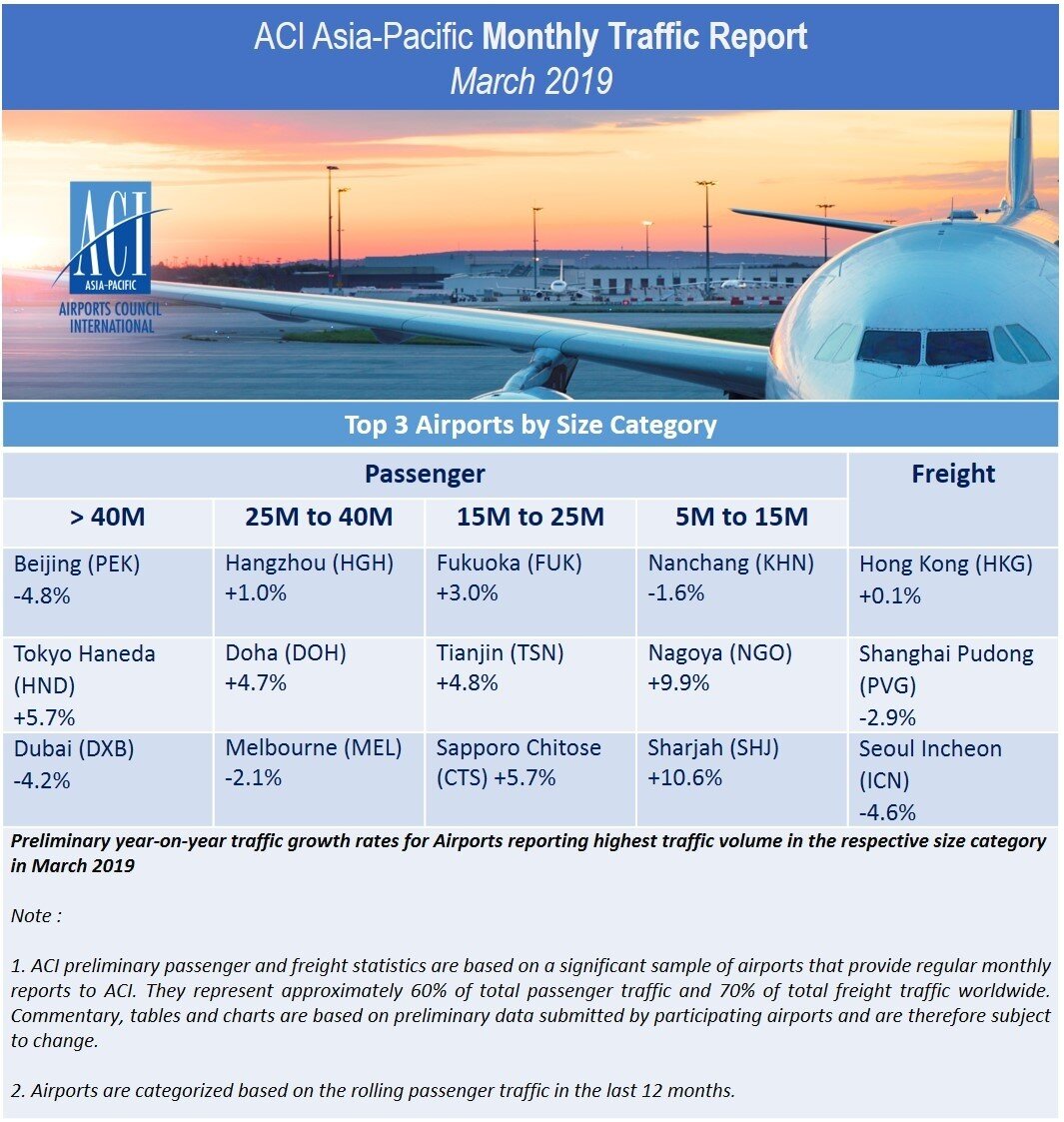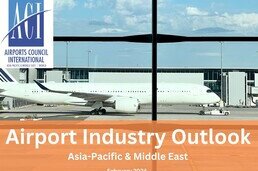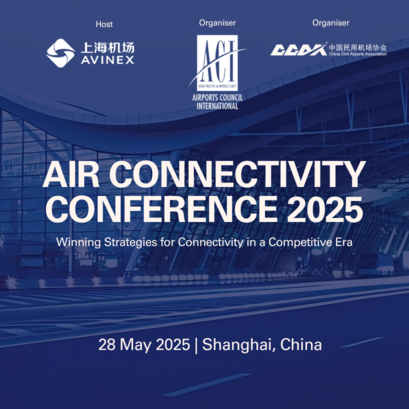
March 2019: Passengers up 2.0% in Asia-Pacific and down -0.3% in the Middle East
- 05 Jun 2019
Passenger traffic in Asia-Pacific recorded moderate growth in March at +2.0% and a slight decline at -0.3% in the Middle East.
In China, growth in passenger traffic was up approximately +1.1% from last year, reflecting slower domestic demands. The top three airports with the most passenger volume increase from last year were Guangzhou (CAN) +4.5%, Nanjing (NKG) +4.3% and Tianjin (TSN) +4.8%.
India also experienced a slower pace of growth in both the domestic and international sectors. Overall passenger traffic declined -2.7% from last year, negatively affected by the partial runway closure at Mumbai and increasing magnitude of flight cancellations of a major airline. Mixed results were observed among major airports in the country: Delhi (DEL) -9.4%, Mumbai (BOM) -16.3%, Bangalore (BLR) +11.5% and Calcutta (CCU) +2.3%.
The bright spots fell on Japan and Korea where many airports benefited from a surge in tourism during the cherry blossom season and generated solid positive growth. Tokyo Haneda (HND), Osaka Kansai (KIX) and Seoul Incheon (ICN) grew +5.7%, +6.2% and +3.8% respectively.
In the Middle East, passenger traffic growth was essentially flat. Dubai (DXB), the largest airport in the region, declined -4.2% as the later timing of Easter holidays resulted in lower demand for air travel. Nevertheless, a number of airports reported positive results: Doha (DOH) +4.7%, Muscat (MCT) +8.3%, and Sharjah (SHJ) +10.6%.
Overall year-to-date passenger traffic in Asia-Pacific and the Middle East grew by +3.4% and +1.1% respectively. The pace of growth decelerated in major markets such as China, India and the United Arab Emirates. Growing geopolitical tensions, softening of the global economy and the grounding of Boeing 737 MAX were a few factors that affected the passenger traffic in both regions and will continue to pose uncertainties going forward.
In terms of air freight, Asia-Pacific declined -3.3% while the Middle East grew +2.1% in March. Among the major freight hubs, Dubai (DXB) reported the highest growth at +5.1%, contributed by airlines’ expanding cargo capacity. Meanwhile, Guangzhou (CAN) possibly benefited from increased demand for perishable products backed by government policies and generated the highest growth in Asia-Pacific at +2.1%.
Throughout the first quarter of 2019, air freight traffic in both Asia-Pacific and the Middle East declined at -5.5% and -0.5% respectively amid the ongoing trade tensions between China and the United States, which weakened manufacturing output and exports.








